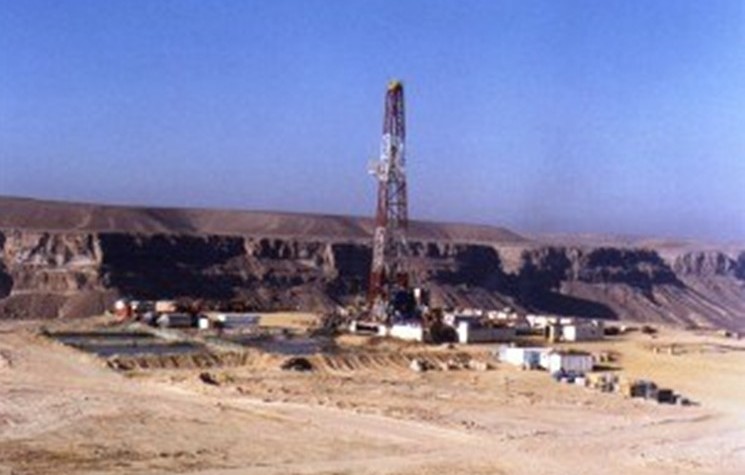Solo Oil buys a stake in marginal field opportunities in Nigeria and updates on Horse Hill in the UK

By Stewart Dalby
Solo Oil has exchanged its shareholding in Pan Minerals oil & Gas AG for a direct holding of 15.9 per cent in Burj Petroleum Africa, a private UK company created with the purpose of involving itself in marginal field opportunities in Nigeria.
Burj Africa and its partners, Global Oil & Gas and Truvent Consulting, have made application for two marginal fields in the current licence round in Nigeria. These two fields contain 10 wells and are believed to contain gross recoverable reserves of 59.3 million (mmbbls) (13.5 mmbbls net to Burj Africa after royalties).
AIM- quoted Solo has also entered into an agreement to increase its investment in Burj Africa: Solo will acquire an additional 5 per cent interest at closing through a cash payment of US$200,000 and later US$300,000 by way of a 39.75 million Solo shares at 0.51p. Upon completion, Solo will hold 20 per cent of Burj Africa.
Oil and gas analyst at Solo’s house broker Old Park Lane Capital comments: “This is a potentially exciting deal for Solo as it accelerates its nascent activities in West Africa with a credible operating partner in Global Oil & Gas. Although there is much to complete over the medium term, Solo has gained exposure to a potential 2.7 mmbbls net to the company for a comparatively modest aggregate investment of £1.1 million.”
Solo is not, like its sister company LGO Energy a purely E & P group. It is an oil and gas investment company with an eclectic mix of minority holdings in Ontario, Tanzania -where its holdings include a 13 per cent interest in the near term producing licence Ntorya –as well as an stake in the Horse Hill licence in south England which has been attracting a lot of interest recently from investors.
Shares in Solo and fellow AIM quoted UK Oil & Gas Investments gushed higher recently when it was revealed that their Horse Hill discovery in the Weald Basin of southern England was much bigger than expected. Nutech, a leading petrophysical consultancy, reckons Horse Hill-1 carries total oil-in-place of 158 million barrels per square mile – and that’s not counting the Upper Portland Sandstone oil discovery.
Nutech’s report says the OIP estimate lies within a 653 feet aggregate net pay section, primarily within three argillaceous limestones and interbedded mudstones of the Kimmeridge, and the mudstones of the Oxford and Lias sections. About 72 per cent of the OIP, or 114 million barrels, lies within the Upper Jurassic Kimmeridge interbedded limestone and mudstone sequence. Final assessments of the Upper Portland Sandstone and the Oxford and Lias sections are in progress, with further results expected shortly.
The discovery, just 3 km from Gatwick airport, is operated by Horse Hill Developments Ltd (HHDL), a special purpose company which owns a 65 per cent participating interest alongside Magellan Petroleum Corp with a 35 per cent interest. UKOG has a 30 per cent direct interest in HHDL and a 1.32 per cent interest in HHDL via its 6 per cent interest in Angus Energy Limited. Fellow AIM company Solo Oil has a 10 per cent stake in HHDL Thus giving it the 6.5 per cent stake in the Horse Hill well.
UKOG has a 20.36 per cent stake in the Horse Hill licences in the Weald Basin, which stretch for 55 square miles. In order to establish estimates of total OIP within the licence area, there’s ongoing analysis by Nutech, UKOG and Solo Oil.
Stephen Sanderson, UKOG’s CEO, said this could be a “possible world class potential resource in what is interpreted to be a new Upper Jurassic “hybrid play”, with the licences within the “likely sweet spot” with the “potential for significant daily oil production”.
“Drilling the deepest well in the basin in 30 years, together with the ability to use concepts, techniques and technology unavailable in the 1980s, has provided new cutting-edge data and interpretations to comprehensively change the understanding of the area’s potential oil resources,” said Sanderson.
He drew comparisons between the Horse Hill Upper Jurassic rock sequence with known oil productive hybrid reservoir sections of the Bakken, the Wolfcamp, Bone Springs, Clearfork, Spraberry, and Dean Formations in the US Permian Basin and the Bazhenov Formation of West Siberia. He pointed out that the US analogues have estimated recovery factors of between 3 per cent and 15 per cent of oil in place.
Importantly, UKOG believes that high pay thickness and a naturally fractured limestone reservoir means the reservoirs could be successfully produced using conventional horizontal drilling and completion techniques – in other words, no fracking. Solo’s chairman Neil Ritson said the find ,“may have very major significance for the Basin and for Solo’s interest”.
This is still very early days – there needs to be further appraisal drilling, testing and analysis before judgements can be made on the productive potential and commerciality of the find – but it’s certainly a welcome shot in the arm for the fortunes of the small companies behind HHDL.
Solo’s shares have come off a bit since the original gushing on the announcement about Horse Hill. But these are difficult times for all small cap oil and gas companies and at a current 0.55p the shares are a long way north of their 52 week low of 0.16p
Comments (0)